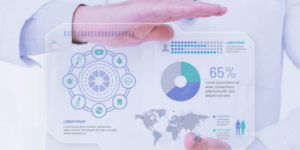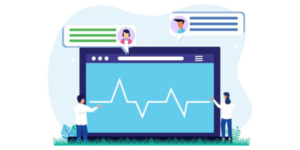27 Jul
In a world where data flows like a stream,
In the healthcare realm, there’s a vital theme.
It’s cybersecurity, a shield so keen,
Protecting patients, their info unseen.
In hospitals bustling, with screens aglow,
Sensitive data dances, to and fro.
From medical records to billing details,
Every piece of info, a tale it entails.
But lurking in shadows, a digital foe,
Hackers and viruses, they aim to sow.
Their eyes on the prize, patient data prized,
To breach security, they strategise.
Doctors and nurses, with care they tend,
To the sick and injured, they extend.
But behind the scenes, a silent fight,
Against cyber threats, they shine their light.
Firewalls stand tall, like sentinels bold,
Guarding the gates, against hackers cold.
Encryption wraps data, in a secure embrace,
Shielding it from harm, in a virtual space.
The healthcare sector
is at the forefront of innovation in the connected digital age, where technology permeates every part of our lives. The delivery and management of healthcare have been completely transformed by technology, from telemedicine services to electronic health records (EHR). But these developments also bring with them a number of serious difficulties, most notably with regard to the security of private health information. Because protecting patient data is critical to upholding privacy, preserving trust, and fending off hostile cyberattacks, cybersecurity has taken on a life of its own in the healthcare sector.

Healthcare organisations
are popular pickings for cybercriminals since they hold plenty of sensitive data, like financial information, personal identifiers, and medical records. This results in significant financial losses, a data breach in the healthcare industry can have disastrous effects on patient privacy and trust. Thus, it is essential to put strong cybersecurity measures in place to reduce these risks and safeguard healthcare providers as well as patients.

Unauthorised access to patient data
is one of the main issues with healthcare cybersecurity. Hackers may take advantage of holes in systems or networks to obtain confidential data, which they can use for fraudulent schemes, identity theft, or other nefarious activities. Furthermore, since connected medical devices like insulin pumps and pacemakers can be used to compromise patient care or steal data, their widespread implementation results in fresh threats to security.

Healthcare organisations require to employ a multi-layered approach to cybersecurity
in order to defend against these threats. This involves placing firewalls and intrusion detection systems into effect to monitor network traffic, protecting information while it’s in transit and at rest, and regularly updating known vulnerabilities in both hardware and software. Also, educating employees about cybersecurity best practices as well as promoting a security-aware culture can help minimise the possibility of human error—a danger that hackers often take advantages of.

Adherence to industry standards and regulations
is an essential element of cybersecurity in healthcare. In the US, laws like the Health Insurance Portability and Accountability Act (HIPAA) helps to keep patient health information safe and impose heavy penalties on violators. International standards guidelines for the processing and protection of personal data contain the General Data Protection Regulation (GDPR) in the European Union. Healthcare organisations can exhibit their commitment to patient privacy protection and legal compliance by following to these regulations and standards.

Data are essential
for improving cybersecurity in the medical industry. Healthcare providers, government agencies, and cybersecurity experts can identify new dangers and develop effective protections by using best practices. Healthcare organisations can improve their security posture by using specialised expertise and resources by partnering with technology and cybersecurity firms.

Updates and patches, like armour strong,
Keep systems fortified, all day long.
With each click and keystroke, a cautious hand,
To thwart any threat, that dares to expand.
HIPAA whispers softly, its rules to heed,
Patient privacy, it’s their creed.
GDPR nods in agreement, across the sea,
Data protection, a shared decree.
Collaboration blooms, like a garden bright,
Between healthcare heroes, day and night.
Sharing insights and strategies learned,
To keep cyber threats, forever adjourned.
So in the world of healthcare, where lives are saved,
Cybersecurity stands tall and brave.
A digital guardian, steadfast and true,
Protecting patient data, through and through.
In the ever-evolving landscape, where risks abound,
Cybersecurity remains steadfast and sound.
For in the healthcare industry, it’s clear to see,
Safeguarding data is key, for you and me.
In conclusion, keeping trust, protecting sensitive patient data, and fighting cyberattacks all depend on cybersecurity in the healthcare sector. Healthcare organisations may improve their resistance to cyberattacks and guarantee the confidentiality, integrity, and accessibility of patient data by putting strong cybersecurity measures in place, following the legal requirements, and information sharing. In the long run, maintaining health data is essential to providing high-quality healthcare services in the digital age, in addition to being required by law and morality.

